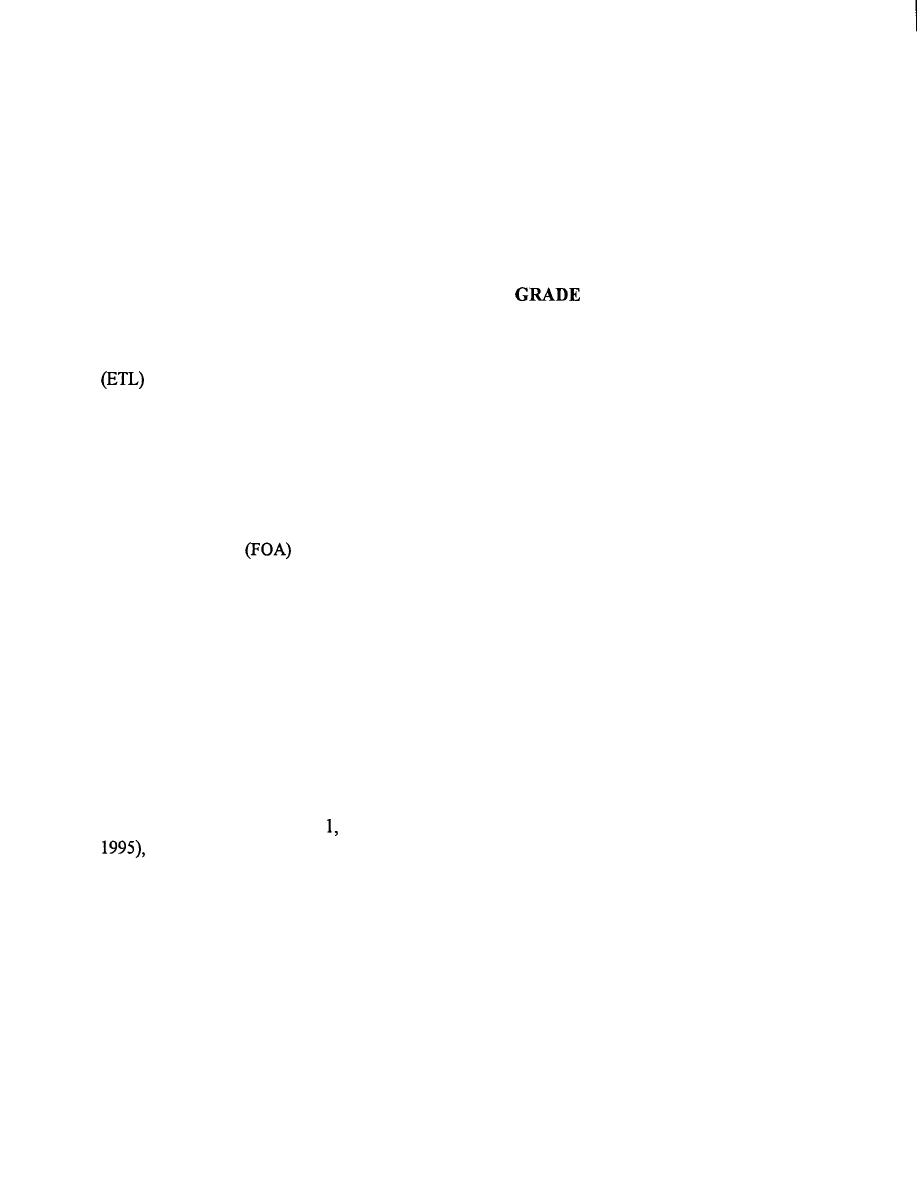
ETL 1110-2-546
DEPARTMENT OF THE ARMY
U.S. Army Corps of Engineers
CECW-EG
Washington D.C. 20314-1000
Technical Letter
No. 1110-2-546
30 September 1995
Engineering and Design
FOR PROJECTS
PROVISIONS TO SET FINAL LEVEE
FORMULATED USING RISK-BASED ANALYSIS
maintenance uncertainties:
1. Purpose. This engineer technical letter
provides guidance for establishing the
(1) Hydraulic uncertainties of changes in
final top of levee grade for flood control
loss coefficients, changes in rating curve due
projects and flood damage reduction studies
to scour or sedimentation, flow instabilities,
formulated using risk-based analysis.
cross-section geometry of the channel,
encroachment into the channel, and
2. Applicability. This ETL applies to
insufficient gage records.
HQUSACE elements, major subordinate
commands, districts, laboratories, and field
(2) Geotechnical uncertainties of
having
operating activities
embankment and foundation settlement,
responsibilities for the de. sign of civil works
.
embankment shrinkage, geologic subsidence,
projects.
and cracking of the embankment from
desiccation. In most cases estimates are
3. References.
made and actual analyses are not performed
due to general knowledge of the regional soil
a. EM 1110-2-1913, Design and
characteristics.
Construction of Levees.
(3) Construction, operation and
b. ETL 1110-2-547, Introduction to
maintenance considerations included rutting,
Probability and Reliability Methods for Use
soil loss due to wind and/or wave forces,
in Geotechnical Engineering.
construction tolerances; and quality of
maintenance.
c. EC 1105-2-205 (change 11 January
Risk-Based Analysis for Evaluation of
b. The term and concept of freeboard to
Hydrology/Hydraulics and Economics in
account for uncertainties in design
Flood Damage Reduction Studies (an ER
parameters is no longer used in the design of
and an ETL are being planned to supersede
levee projects.
this EC which expires 3 1 December 1995).
c. In accordance with reference c.,
4. Background.
economic and hydraulic factors are used in a
risk-based approach to establish a nominal
a. In the past, freeboard was used to
top of protection and size of project.
account for the following hydraulic,
Outputs of the analysis include well defined
geotechnical, construction, operation and



 Previous Page
Previous Page
